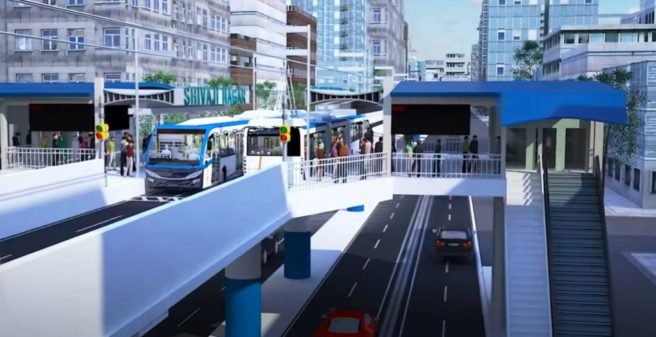
INDUSTRY FOCUS: Alternative Propulsion Systems
The expansion of public transport is urgently needed in many Indian cities, but the construction of metros and rapid transit systems, which has been the main focus so far, is often facing serious limitations: Construction takes a long time and is very cost-intensive. For rapid progress, especially in various medium-sized cities, the Indian central government is now giving priority to another transport system.
A political decision
At the end of October 2020, the government decided to comprehensively promote the introduction of battery trolley buses on dedicated routes, usually on elevated alignments but also at grade. This is to offer a serious alternative to the construction of metro lines. The investment costs of such BRT trolleybus systems are estimated to be only one tenth of those of new metro systems and only one third of those of light rail systems. In addition, the systems are much more easily scalable due to the combined shared use with conventional bus routes in the feeder – the construction of integrated systems is much faster than with alternative transport systems. A statement to this effect was published by the Secretary of the Ministry of Housing & Urban Affairs.
By Indian-standards medium-sized cities are defined by a population of up to one million inhabitants. But suburbs in the even larger metropolitan areas of such cities are also eligible to the new program. Any lines with less than 15,000 passengers “Peak Hour Per Direction Traffic” (PHPDT) are considered suitable.
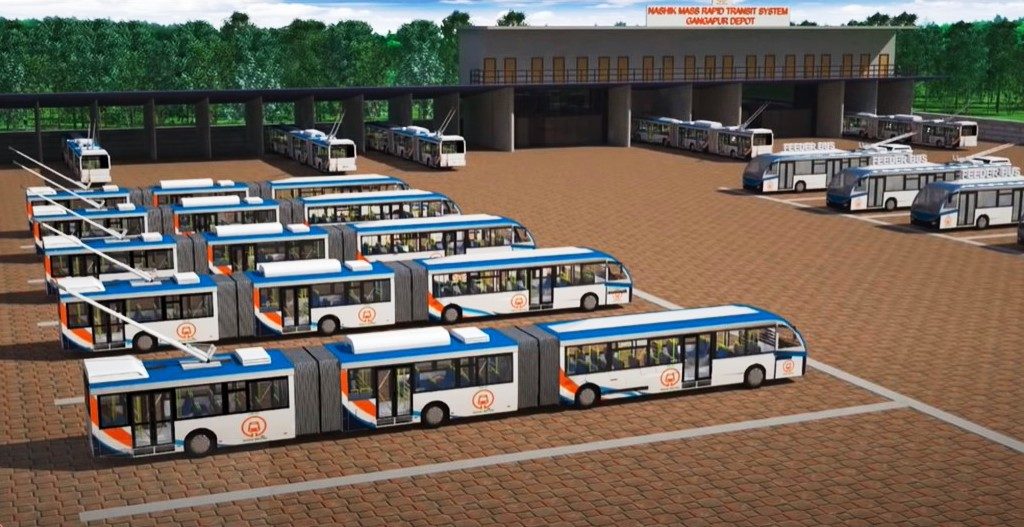
© Maha Metro for Nashik / Twitter 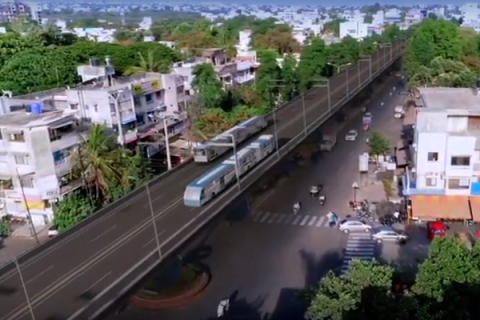
© Maha Metro for Nashik 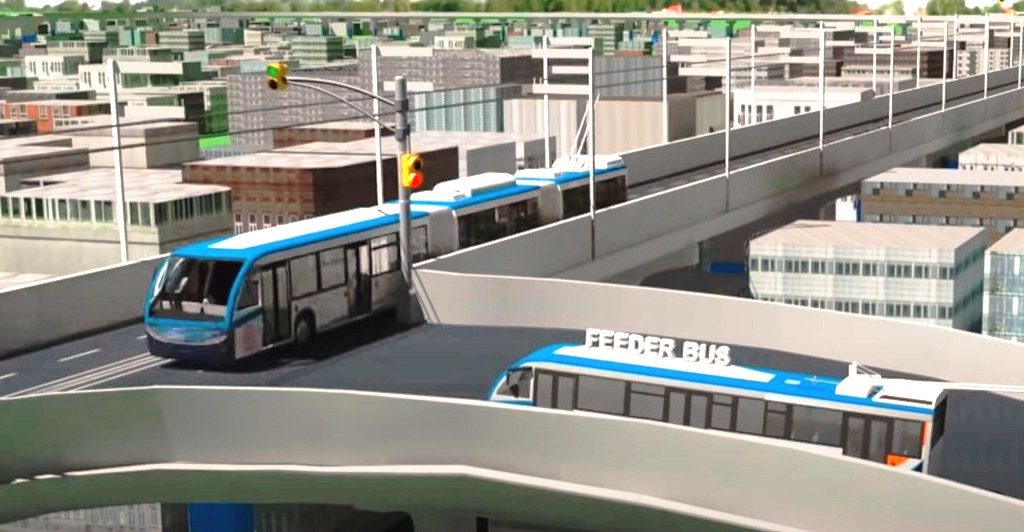
The planned network | © Maha Metro for Nashik / @metrorailpune
Metro Neo Nashik
A first application example is under construction in the Nashik metropolitan area, located in the province of Maharashtra about 150 km northeast of Mumbai. Two lines with a combined length of 32 km, which will largely run on an elevated alignment, are planned in Nashik. The corresponding approvals and permits were granted in 2019, and in January 2021 the financing was secured through the approval of public funds. Preliminary construction work had been carried out and the main structural engineering work has just begun. The first sections are scheduled to start passenger service in 2023.
Two corridors are initially planned, the first between Gangapur and Mumbai Naka, with a length of 10 km and with 10 stations (Gangapur, Jalapur, Ganpat Nagar, Kale Nagar, Jehan Circle, Thatte Nagar, Shivaji Nagar, Panchavati, CBS, Mumbai Naka). The second corridor will be built between Gangapur and Nashik Road, with a length of 22 km and 15 stations (DHRUV Nagar, Shramik Nagar, Mahindra, Shaneshwar Nagar, Satpur Colony, MIDC, ABB Circle, Parijat Nagar, MICO circle, CBS, Sharda Circle, Dwarka Circle, Gayatri Nagar, Samta Nagar, Gandhi Nagar, Nehru Nagar, Datta Mandir, Nashik Road). CBS will be the main interchange station between both corridors. In addition, there will be two feeder corridors: a) Satpur colony – Garware – Mumbai Naka and b) Nashik Road – Nandur Naka – Shivaji Nagar.
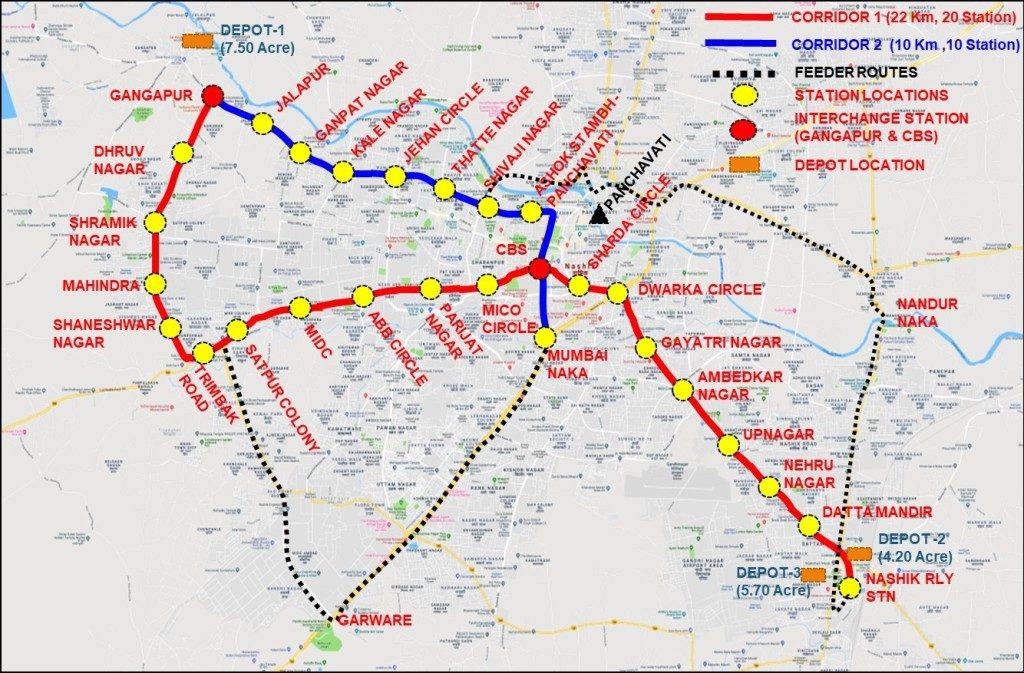
Vehicle configuration
Articulated and double-articulated (hybrid) trolleybuses with powerful traction batteries for journeys away from the overhead line on the main lines will be used. Their batteries will be recharged during the subsequent journey on sections under the installed, two-pole trolleybus overhead line with 750V=. Thus, there wont be any need for time to recharge at the termini, which would require additional vehicles and personnel on the line and which would subsequently also cause higher operational costs. For the feeder lines, 12-metre or articulated hybrid battery trolleybuses as vehicles are also planned, or alternatively pure battery buses.
A first tender for the procurement of the first 50 vehicles was just announced: Interested parties have to submit their “Expression of Interest” (EOI) by 5 May 2021. Initially, 36 double-articulated trolleybuses and 14 articulated trolleybuses will be procured. The tendering body is the Maharashtra Metro Rail Corporation Limited (MAHA-METRO) which is fully owned by the public sector.
The total system investment costs are will amount to approximately €25 million excluding vehicle procurement – undoubtedly an attractive value compared to any rail system, with lower capacity but greater flexibility to integrate existing bus networks.
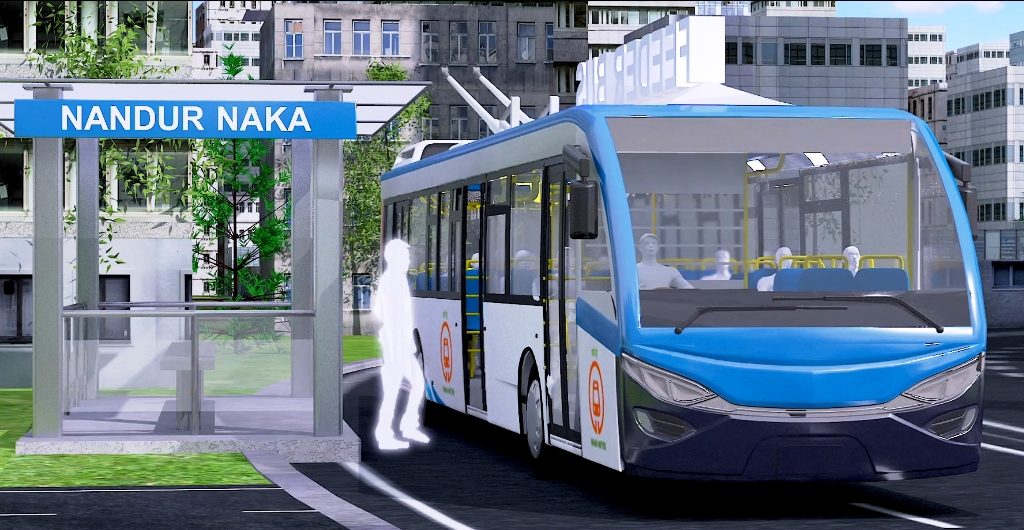
Further projects on their way
Following the model in Nashik, a second new battery trolley bus system according to BRT standard is currently being launched: The detailed project description for the construction of such a system in the city of Warangal was submitted to the central government at the beginning of April 2021, with the aim to receive the necessary funding. “Warangal Metro Neo” is the project name, which includes the construction of 15.5 km of reserved track with 21 stations in a first stage, 8.4 km of which will be on an elevated aligment, the rest at-grade. The first line will run between Kazipet and Warangal railway stations, and a first section might be commissioned by 2024. The system will use articulated and double-articulated battery trolleybuses, too. An ATP (Automated Train Protection) system is to be installed on the dedicated track. “Maha Metro Neo” is acting as a consultant in the project. It has also been announced that another similar project is being planned for the Dehradun / Rishikesh / Haridwar area.
It remains to be seen to what extent the first systems can prove themselves and serve as a model for further systems, as planned by the government.
Information about the new projects is also available here: https://www.trolleymotion.eu/trolleynews/beitrag/?id=9382.
16.04.2021

Hello, really interesting! Actually a similar BRT with trolleybus is implemented in Mexico City. It is already underconstruction and it’s going to be finished on June 2021. The project it’s called Trolebús Elevado that will connect Constitución de 1917 metro station with Santha Martha metro station.